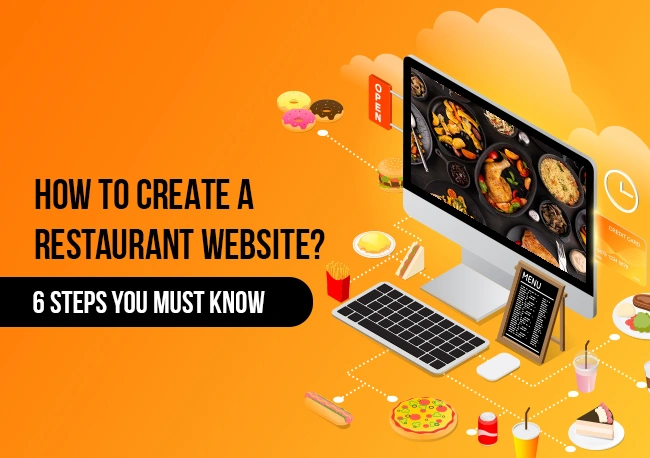Like cooking, building a website has many steps to ensure it turns out to be a great dish. You have to buy a domain, plan the structure of your website, get the developing team on board, create content, marketing, and so much more for an impressive and dynamic website.
But is that it?
Actually, these aspects are merely the tip of the iceberg (not the lettuce :P). Developing a full-fledged website requires you to pay close attention to every facet. You have to research different websites and figure out what’s best for you.
Sounds like a lot of work, right?
But what if you can find the answer to how to build a restaurant website on a single platform?
From domain registration to marketing and everything in between, our blog consists of all the things you must know for crafting a bespoke website.
Do You Need a Website for a Restaurant?
- Planning to expand your business
- Starting an online business
- Have a cloud kitchen
If either of these pointers are your priority, website development for your online restaurant business is a must.
An online business can give you remarkable growth opportunities and becomes a medium to attain a desired goal.
- It Strengthens your business to become a brand
- Offers round-the-clock availability to your customers
- Promotes other offerings
- Addition of new customers
- Boosts online presence & sales
Coming back to the main question — how to make a restaurant website. Let’s dive deep into it.
A Step-by-Step Guide to Creating a Website for a Restaurant
Like a multicolor umbrella, website development has numerous aspects, which we underlined in the introduction. However, understanding them individually can be confusing. Hence, we have segregated each into 6 parts to give you a clear perspective on what you need for website development.
1. Make a Research
- Target Audience
- Determining Your Goals
➢ Target Audience
The development of your website partially depends on your target audience, particularly when it comes to growing your restaurant business. The ones who will interact with you and bring you business are your target audience. However, it is not as easy as it might read.
Firstly you must figure out your target audience!
Determining the age range, location, preferences, purchase patterns, and intentions is important. Segmentation of these demographics will help you make informed decisions in website creation.
For Example, We have checked the audience demographics of a popular website for restaurant table reservations under one roof known as Dineout
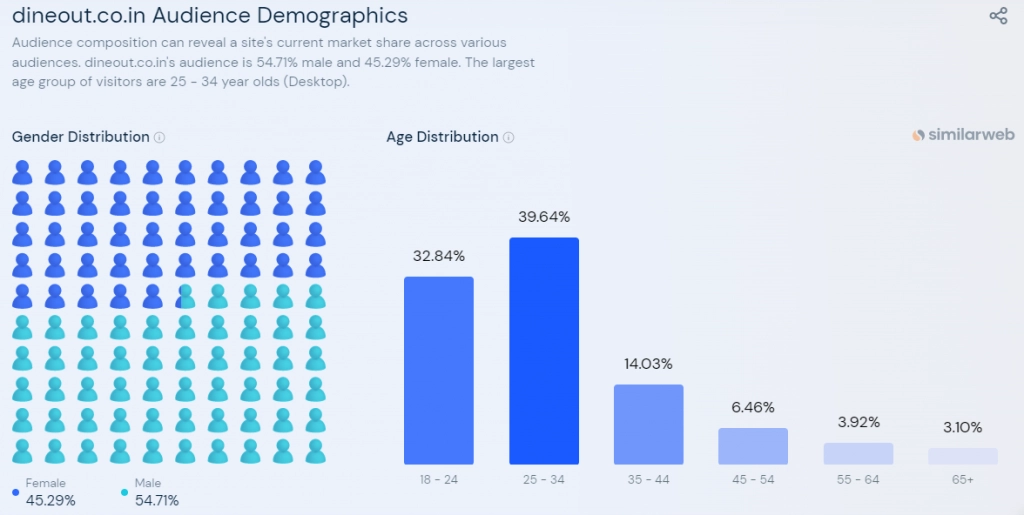
You can plan the elements such as theme, navigation, typography, functionalities and create a personalized experience for your target audience. The target audience can be identified through social media, email marketing, online forums, and so on.
Also Read: What Are The Benefits Of A Website For Small Businesses
➢ Determining Your Goals
Besides your target audience, website development is also dependent on your goals. Clearly defined goals are integral for your digital success. Your established objectives will help you monitor online performance, improve decision-making, create comprehensive marketing strategies, and form KPIs.
- Increase revenue
- Improve client satisfaction
- Digital availability
- Expansion of business
- Draw more customers
- Increase bookings
The above-mentioned pointers are the most common website development goals. The functionalities, features, and many more aspects of website development depend on your goal. Once you figure out your goal, planning the structure of your website becomes relatively easy.
Also Read: Cheapest Way To Start A Website
2. Starting a Website
- Register Your Domain
- Purchase a Web Hosting
- Choose a CMS Platform
➢ Register Your Domain
The term domain registration refers to registering the name of your business on the internet to ensure it is no longer available for others to use it. This is the initial step for creating a website. Before purchasing the domain, you have to choose a name representing your restaurant.
Supposedly, the name of your restaurant is Desi Kitchen. You can go for the same as your domain name. www.desikitchen.com will be regarded as your domain name. This name will represent your restaurant’s identity, and customers will be able to reach out to you.
However, if you plan to go for another name, we recommend choosing it wisely.
Ensure your domain name has zero spelling errors, avoid spaces and special characters. It would be great if you don’t be generic with your domain name. Instead, think of a unique domain name that is easy to comprehend and remember, especially not owned by anyone else on the internet or in your industry. Something like www.homelymeals.com.
Once you figure out the name, register it on the preferred TLD. You can go for .com to promote your restaurant globally. However, if you want to stay limited to your vicinity, go for a CCTLD, which includes .in, .ca, .uk, etc.
Also Read: What To Do When Your Domain Name Is Taken?
➢ Purchase a Web Hosting
The next step calls for choosing a web hosting provider. Hosting providers can’t be chosen at random. You have to look for numerous aspects, such as reliability and market reputation.
Further, considering technicalities like bandwidth usage, uptime, webspace, SSL certificates, cPanel access, and backup availability are a must. Whether you opt for shared hosting, VPS server hosting, or a dedicated server, ensure your choice aligns with your website’s specific needs and growth potential.
Hosting services should never lack performance, security, scalability, and management. These factors are essential to ensure your website responds seamlessly.
Selecting the right provider is also subjected to your needs. We advise you to research thoroughly and partner with a reliable and qualified provider that offers a reasonable hosting package.
Don’t forget to take a trial before buying the services. The test drive will give you an overall understanding of whether or not you are making the right choice.
Also Read: How To Host A Website In Simple Steps
➢ Choose a CMS Platform
From WordPress to Shopify to Drupal and Magento, countless options are available to launch your website. CMS platforms are a boon for business owners who don’t have the technical expertise or don’t want to go through the hassle of creating everything from scratch.
No code or difficult elements are complicated to understand and learn. Creation, management, revamping, updating, publishing, and so much more is a breeze. Plus, most interfaces are intuitive with an appealing look.
However, choosing compatible plugins and responsive themes is crucial to ensure everything works flawlessly. Pay close attention to updates. Timely updates and effective care provides an extraordinary user experience.
Also Read: Best Content Management System Platform Optimized For SEO
3. Start Designing & Development
- Synchronized Theme & Fonts
- Seamless Navigation
- Mobile-first Design
- Use High-quality Visuals
➢ Synchronized Theme & Fonts
The theme and font style should always be aligned with your business. You must use the colors of your logo in the theme of your website. For instance, if you look at Zomato’s website, its color palette is in sync with the colors used in its logo — black and red.
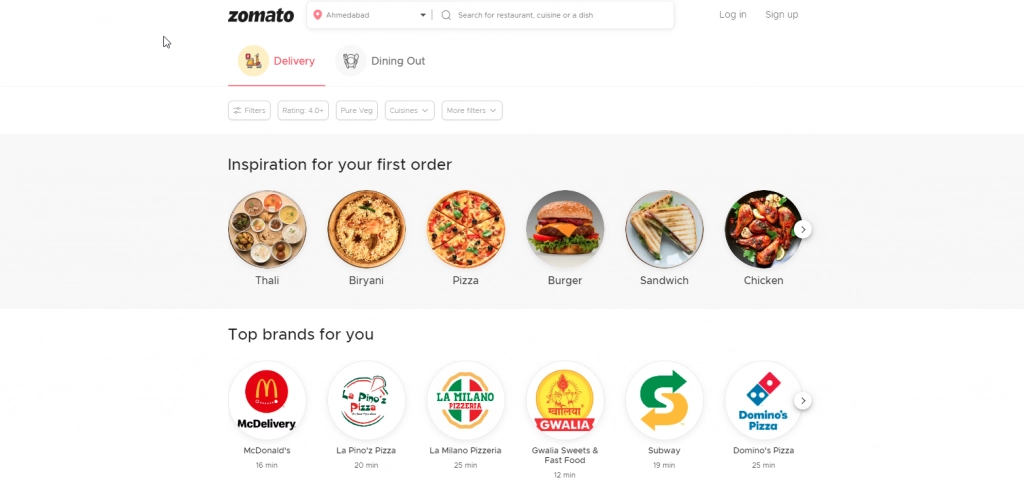
The color theory also impacts user experience a lot. Emotions are also depicted through colors.
For instance:
- Blue is used for showcasing honesty and trust.
- Green is for stability, health, and freshness.
- Reds are for showcasing enthusiasm
- Yellow evokes happiness, cheerfulness, and creativity.
We recommend you choose the colors wisely based on your idea for representing the business. Also, ensure the chosen colors don’t strain the eyes or inhibit readability.
As for the typography, pick a clear and modern font style. You can go for Sans Serif, Serif, or Roboto Slab. These are the widely used fonts for website development. Like colors, font style should also be considered based on visual impact. It should give clear readability. So choose it thoughtfully to enhance user experience.
Also Read: How You Can Find Fonts From Website?
➢ Seamless Navigation
User experience is equally dependent on seamless navigation as on an attractive layout. 38% of people will stop engaging with a website whose layout is unattractive. Hence, it is crucial for the site design to be attractive and intuitive.
The menu bar, CTA, filters, ratings, cuisines, and numerous such features should be placed properly for users to find them easily. The site should be uncluttered and simple to navigate. It should have all the information a user might need when placing an order.
For instance, keep the home delivery and dining-in option at the top for guests to easily order or reserve the table.
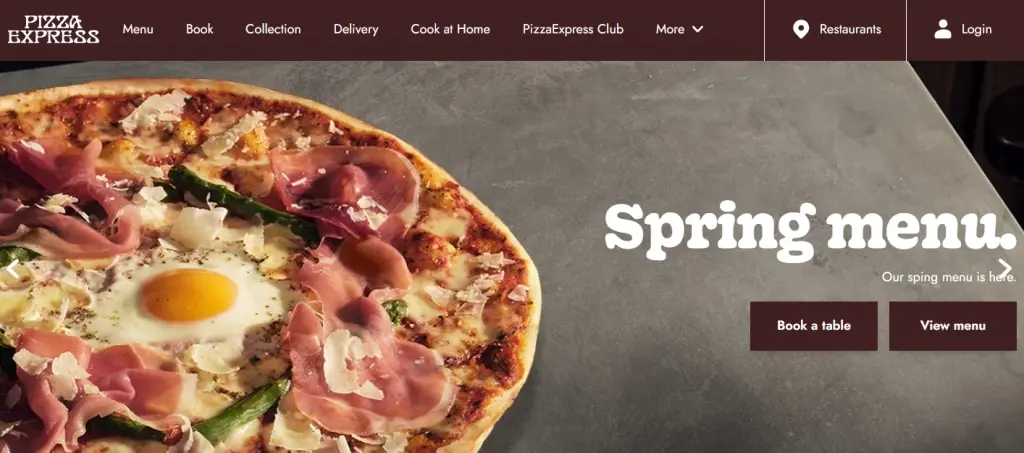
Website design is not limited to big screens. They are equally important for mobile screens. Compared to desktops, smartphone conversion rates are 64% higher. This is only possible through a responsive and mobile-friendly design.
Content and its structure are crucial factors in a mobile-first design. Avoid using redundant or false information to keep decluttering and distractions at bay. Maintain a hierarchy based on your priorities. Boosting revenue is your primary focus, and including products and discounts at the top would be a great idea to capture users’ attention.
Adding high-resolution images is a must for an enhanced user experience. However, adjusting their sizes is equally important for a quick site response on small screens.
Visuals, elements, and design should be as adaptive as on big screens such as laptops, PCs, and tablets.
The size of CTA buttons and other features should be optimum according to different screen sizes.
Below is an example of how properly the website should be compatible with both mobile & desktop.
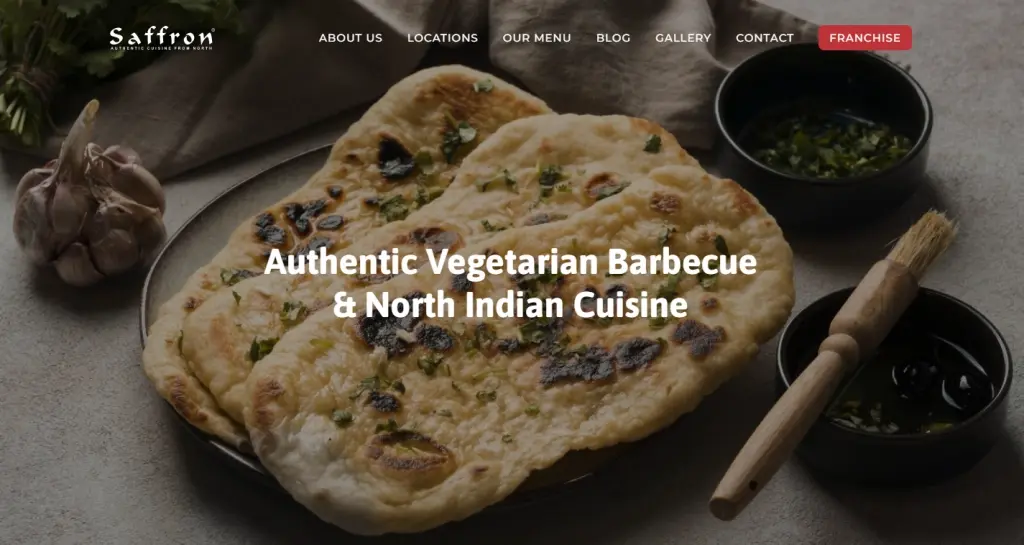
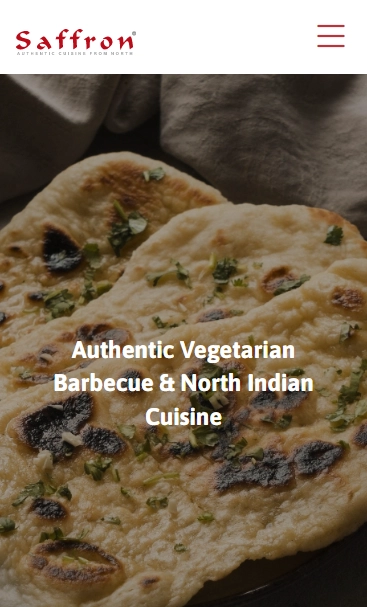
If you look at both images, you might notice that the menu and image got adjusted to the average size of fingertips. This is possible when a website has been optimized for mobile.
Lastly, Be attentive to the font size. Fonts should be easily readable on mobile as they would on a website.
Also Read: Types of Website Navigation – A Detailed Guide
➢ Use High-quality Visuals
It is believed that humans are wired to adapt visual content faster and more efficiently than words. Visuals make it easier for humans to digest information. Hence including them on your website is a great marketing tactic to attract more users.
Choose high-resolution images to promote the ambiance of your restaurant and highlight your food menu. Most guests tend to check a restaurant’s ambiance and cuisines before dining in, making it paramount for you to show your restaurant in the best possible limelight.
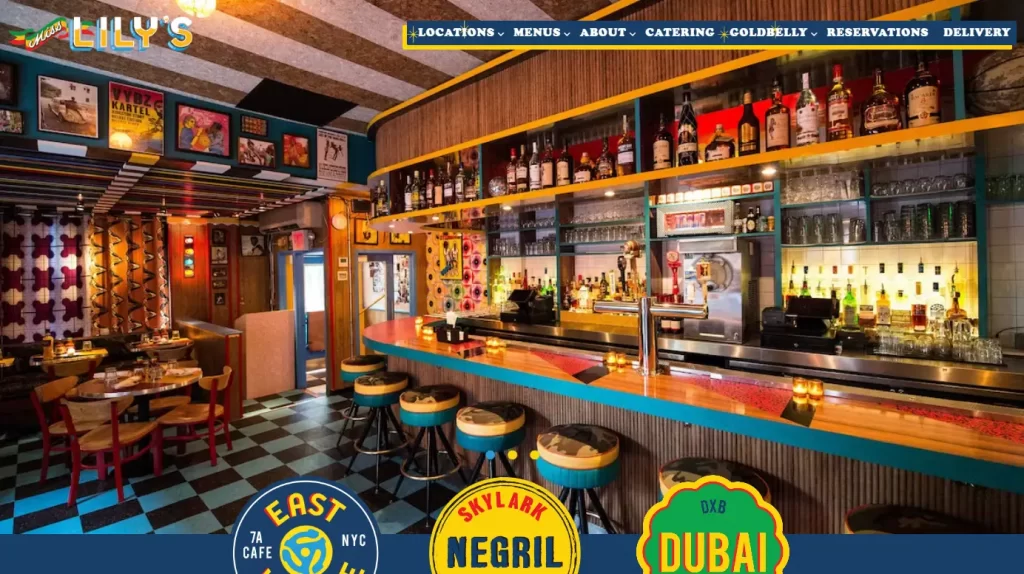
The visuals should be high-quality and authentic. Such visuals are an excellent way to build a sense of security and satisfaction among your guests.
4. Plan the Content
- Draft Fascinating Copy
- Highlight Your Menu
- Create Engaging “About Us”
- Show Special Events & Promotions
- Show Reviews & Testimonials
- Don’t Forget to Blog
➢ Draft Fascinating Copy
Content is another excellent way to grab users’ attention!
However, the content should be powerful enough to drive users to take a certain action. Make sure users are hooked up right from the start. The average time user session per page is 52 seconds. All in all, you only have 52 seconds to capture users’ attention and make them stay at your site.
You can draft the content and copy with an appealing story or something that challenges their thoughts. For instance – highlight employee stories, share recipes with a quirky introduction, and so on.
Ensure the content is easy to comprehend. They shouldn’t go to Google to search for the meanings of a sentence or a word or visit another site to get the information.
➢ Highlight Your Menu
Delicious Food is a restaurant’s main highlight and guests’ priority. However, if it is not displayed properly, customers will leave your site and might visit your competitor’s site. Hence, featuring your best dishes, most ordered food, and other cuisines is crucial for guests to show the cuisines you serve.
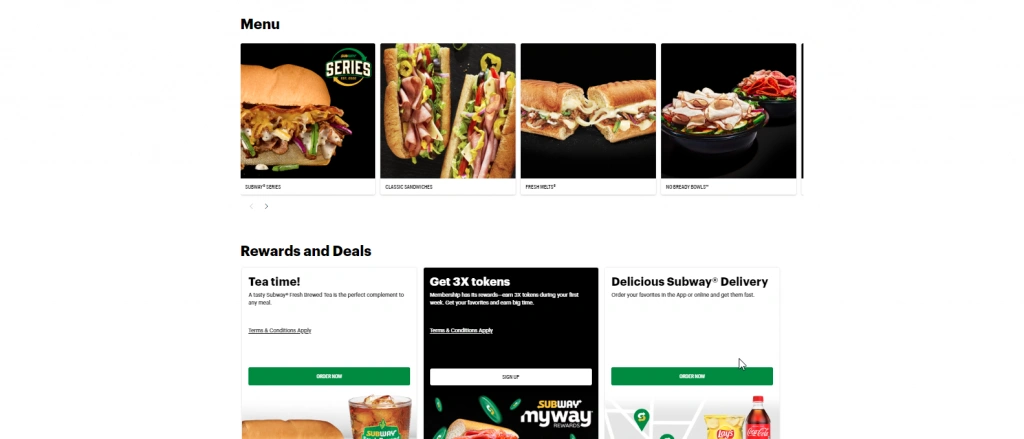
Take a look at the images we have added above. Subway’s website is a great example of how a menu must be exhibited. The website features a menu, rewards & deals, and the best sellers. The website’s content, visuals, and structure is intuitive and simple, displaying user-relevant information.
Also Read: Complete Guide To The Content Management System
➢ Create Engaging “About Us”
A restaurant website might not have multiple pages compared to other technical websites. Although a few common and perhaps the most important pages include the About Us.
About Us is paramount for illustrating what your business is about, its history, important individuals involved in developing the business, their aim, and so on. You can also give a glimpse of life working at your restaurant.
Ensure the About Us page gives a human touch. Your page should talk about your business, followed by a customer-centric approach.
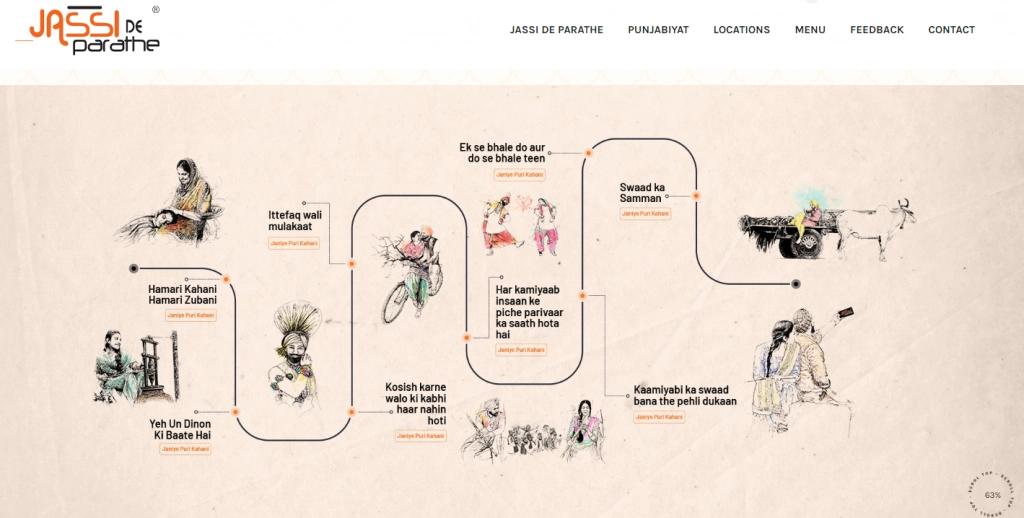
Jassi De Parathe)
You must upload this page to reassure the site, visitors, and potential guests that your site and business are trustable. A seamless customer journey is highly dependent on the About Us page.
➢ Show Special Events & Promotions
Your restaurant might carry out special events and promotions such as karaoke nights or festival celebrations. However, your online audience might not be able to enjoy such events if they are unaware of them.
We recommend you feature such special events and promotions in your restaurant to attract more customers.
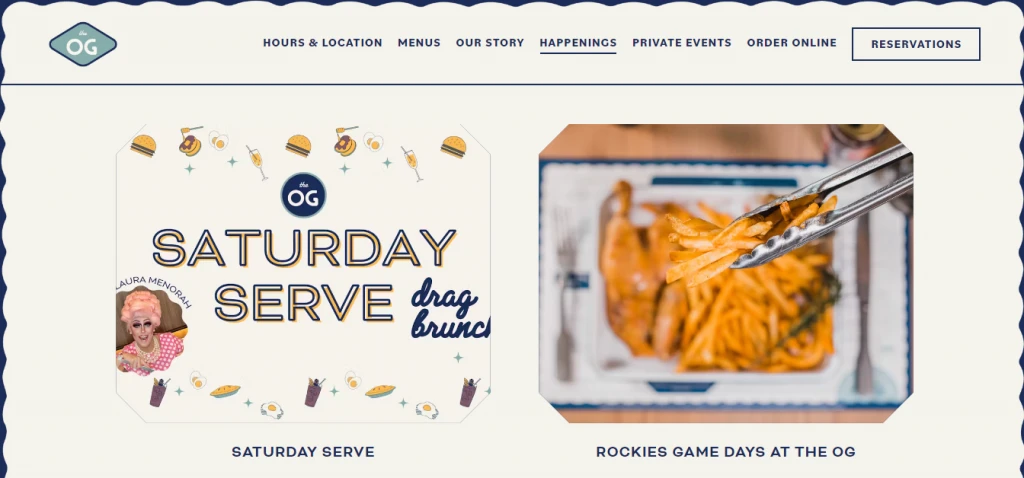
Including such pages on your site increase audience engagement, brand awareness, and foot traffic in your restaurant. These pages can also be identified as your USP since this makes you stand out from competitors.
➢ Show Reviews & Testimonials
Customer testimonials and ratings are especially vital in a restaurant business. These numbers and words are fantastic ways to develop trust among your target audience. Positive testimonials picture a great image of your business, which can certainly influence your customers’ decision-making process.
Trustworthy reviews can grow your customer base and boost sales. It can draw new customers and rank your restaurant at the top of the SERPs.
➢ Don’t Forget to Blog
Blogs are a sure-shot way to grow traffic and acquire new customers. Unlike website content, blog content is regularly added to the website. Plus, it is more dynamic compared to website content. You can talk about different topics that may not directly relate to your restaurant. The Importance of posting blogs cannot be overstated—regular blog updates not only engage your audience but also boost your website’s visibility on search engines.
For instance – you can draft employee feature stories, talk about different cuisines, drinks, seasonal food trends, picnic food ideas, and so much more. You can even add long-tail keywords that you might not be able to add to the website content.
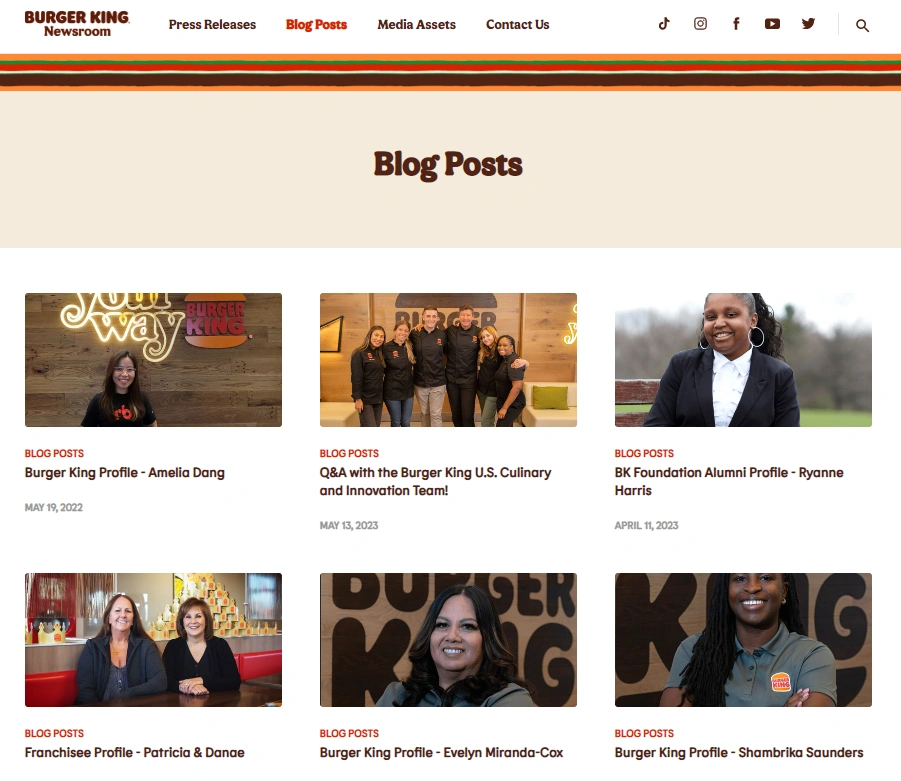
However, certain practices have to be followed to rank a blog on search engines. Blog topics should be trendy and based on search intent. Including short, long, and LSI keywords are a must. External & internal linking, content promotion, and adding statistics are a must.
Your content should be well-structured with catchy headlines. It should have click-worthy meta descriptions and, of course, high-quality visuals to strike a balance between the two.
Also Read: Can I Blog To Improve The SEO Of Website?
5. Create a Strategy For Marketing
- Proper SEO Optimization
- Focus on Local SEO
- Don’t Forget Online Listing
- Promote on Social Media
- Focus on Influencer Collaborations
- Get Feedback From Customers
- Work on Paid Ads Marketing
➢ Proper SEO Optimization
Website development is not only about designing and developing. It is also about strategic promotion to reach out to the relevant audiences. SEO Optimization is the initial stage for marketing your website. You have to prepare a proper SEO Strategy.
This includes On-page, Off-page, and Technical SEO:
The on-page optimization includes writing quality content for the website and blogs. Adding relevant keywords, click-bait descriptions & taglines. Performing external & internal linking.
As for Off-page SEO, it means activities done outside of your website. You can do guest posting on authoritative sites to generate backlinks. Ask people to review your website and get brand mentions.
Technical SEO is all about optimizing the technical aspects of your website, which includes alerting Google about the sitemap of your website. Creating and maintaining SEO-friendly structure, improving website speed, performing mobile optimization, eliminating thin or duplicate content, fixing broken links & pages, and optimizing for core web vitals.
All these SEO efforts will help skyrocket your online and offline business.
Also Read: Best (Paid+Free) SEO Tools For The Best Performing Website
➢ Focus on Local SEO
Local optimization of your website is also a must to create awareness among people who might not be familiar with your restaurant.
The functioning of local SEO is pretty simple. Your business will likely appear at the top whenever a web user searches for a food restaurant near me. However, optimizing for local SEO is paramount for this to happen.
Start by creating your restaurant’s profile on GMB. Engage on social media, focus on local link building, and ask your guests to review their experience. Keep the information about your restaurant up to date and ensure everything you upload online is authentic.
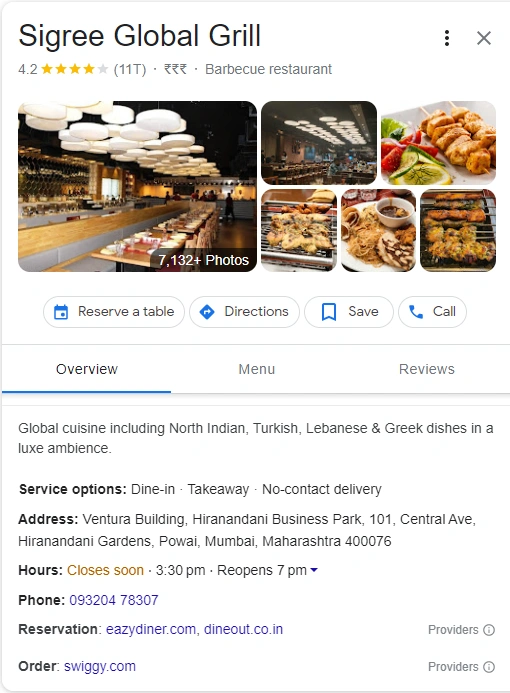
Lastly, participate in local community events like non-profit campaigns, volunteering activities, sponsoring events, and so on. These small changes will help you increase the authority of your business and create brand awareness among people. This is also a great way to generate inbound links.
Also Read: Which Businesses Benefits From Local SEO Practices?
➢ Don’t Forget Online Listing
Restaurants are a monopolistically competitive industry. You can find numerous fast-food outlets, cafes, restaurants, and lavish hotels in almost every corner of your location. Hence implementing solid strategies and following modern-day practices has become necessary to beat your competition.
One way to upscale your growth is by listing your restaurant on food delivery apps like Zomato and Swiggy. Listing your restaurant helps you target a wider range of customers. Your business gets better visibility, and the revenue is also doubled.
Plus, these food apps are highly renowned and trustable among people. Once you get good ratings and reviews, your business will automatically prosper on the apps leading to accelerated growth.
➢ Promote on Social Media
Social media is a great medium to promote your restaurant. Today, most people use social media to checkout reels, posts, stories and hopefully follow the account if they like it. You can also target such food lovers and encourage them to follow you by sharing interactive content.
Your social media posts can be about your restaurant, its offers, sharing BTS, cook-offs, and recipes to create user engagement and user interaction.
However, you can’t simply join any social media site. Choosing the platform will directly depend on your goals and target audience.
For instance – if you own a fast-food restaurant, your target audience might age between 15-35. Generally, this age range of individuals are on renowned social media platforms like Instagram, Facebook, Quora, and so on. You can analyze and choose a platform that has your target audience and fits your requirements
You also have to consider your business goals. Do you want to create brand awareness, increase table bookings, etc. Upon identifying your goal, you must figure out the right platform to achieve your desired goal. You can also strategically schedule these posts using some of the best free social media schedulers out there.
➢ Focus on Influencer Collaborations
A great way to boost your online presence is collaborating with influencers and, food bloggers & vloggers. Collaborating with them will create a positive impact on your business. Plus, it can even influence the decision-making of your customers.
You can invite influencers, bloggers, and vloggers to try out your food to review and promote them to their followers. You can also ask them to showcase the unique side of your restaurant.
For instance – let’s assume your restaurant has an offer of unlimited food & drinks at only Rs 299. you can ask them to encourage their followers not to miss out on this amazing offer.
You can also ask the influencers to talk about interesting games, upcoming events, etc, in your restaurant. These collaborations can help you draw attention to your restaurant, leading to increased capitalization, brand creation, and tremendous growth.
➢ Get Feedback From Customers
Business is all about constant thriving. However, this is only possible when you keep your guests happy. But how would you do that? Customer Feedback is your ultimate solution. Asking for feedback is a great way to identify the problematic areas in your restaurant.
Collecting feedback is a great idea even when you don’t have any problems in your restaurant. You can leverage the information to enhance the customer experience to the next level.
You can collect feedback by asking customers to review your restaurant or ask them to fill out an in-app survey or feedback form. Feedback can be requested after each service or once in 3 to 6 months.For collecting diner feedback, You can implement an effective email marketing strategy for your restaurant.
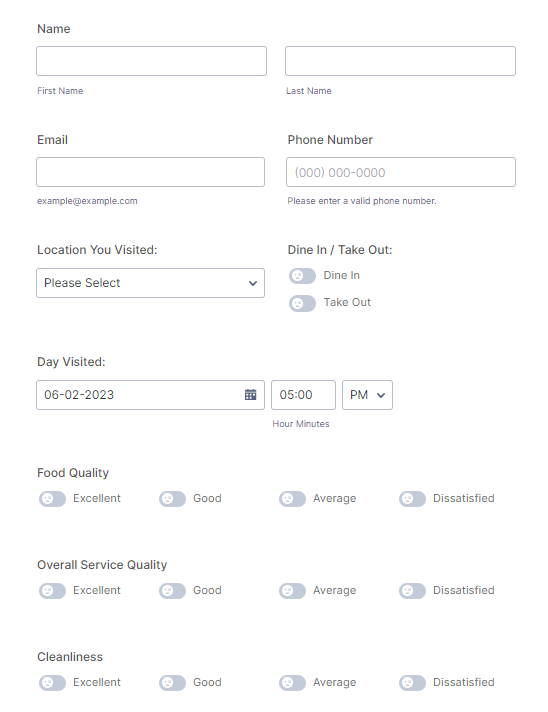
Don’t worry about negative feedback. Like positive, negative ones can also help in improving your services. Instead of being upset or concerning yourself, take negative feedback as an opportunity to make your customers happy.
Moreover, when you implement your customer’s constructive feedback, they feel valued, which can lead to customer retention and loyalty. Always remember happy customers equate to better sales, customer retention, referral visits, and improved customer services.
➢ Work on Paid Ads Marketing
Organic SEO is an excellent marketing strategy for growing your restaurant business. However, there might be a case where you might not be able to commit your time and efforts for months. This is when paid advertisements come into play.
Paid ads are one of the most fantastic ways to achieve a desired goal in the short run. However, it’s fundamental for you to have a sufficient budget to run the ads.
Paid ads can help you reach a specific audience on a specified platform, such as Google, Instagram, LinkedIn, Facebook, etc. You can even customize the ads for a personalized user experience.
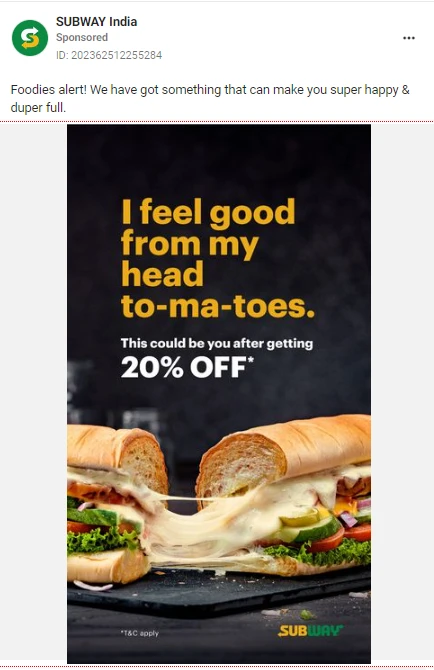
However, you must consider certain practices to ensure ads generate effective results. There are several key activities involved in creating ads, crafting a compelling copy, adding appealing and high-quality visuals, tracking growth, setting the right budget, and choosing the right ad type.
Implementing these techniques will generate immediate results. Within an hour or so, you will start noticing impressions, and in a few days, you will also get leads and conversions.
Also Read: How Is Ranking Different When Comparing PPC Vs SEO?
6. Website Maintenance
- Keep Your website Updated
- Keep Monitoring Analytics
- Top Security and the Latest Technology
- Keep Testing Regularly
➢ Keep Your website Updated
By this stage, your website is developed and launched. So, congratulations on that! It’s time for you to maintain it.
For maintenance, update your website at regular intervals. Keep an eye on the design and content to ensure they are not outdated or causing any negative impact on the site or user experience.
Remove redundant content or multiple images. Resolve any issue you might be experiencing with the usability, responsiveness, mobile accessibility, inconsistent design, etc of your website.
Also Read: Top 5 Reasons Business Owners Need Website Backup
➢ Monitor Analytics
As previously mentioned, you might be aware of your internal issues in the design, such as inconsistent design and usability. However, certain issues can only be seen by external users, which in this case is your target audience. But the question is, how do you spot what your users want?
Analytics is the answer to the question you have been wondering!
Website analytics helps you understand the issues the web users might be facing on your website. You can address those issues and solve them to improve user experience.
The insights determine the most and least popular links on your site. You can also identify the source of visits of your target audience and the average time spent on a page. This data can be leveraged to improve user experience. Moreover, analytics tools will not only help in fixing the inconsistencies but also improve the ratio of traffic and sales.
➢ Security and the Latest Technology
Keeping your site protected and up-to-date with the latest technology is vital for smooth and secure functioning. Restaurant owners tend to collect guest information such as numbers, passwords, bank details, and so much more. All this information is at risk when your site is vulnerable to cyber-attacks.
Thus, keeping your site protected by keeping an eye on unusual activities, updating passwords, sewing software patches, and double-checking the encryption protocols are a must. Limiting access would also be an excellent way to improve the safety of your site.
Besides security, the development of your site should always be in the latest technology. The latest technology equates to better website security, streamlined user experience, reduced turnaround time, improved site performance, and easier maintenance. Plus, it stays relevant even in the long run.
We recommend you create a website with the latest technology and version. Ensure it is flexible in case you want to shift your site to a different technology.
➢ Keep Testing Regularly
Testing a website is important for a user-friendly experience and enhanced security. However, this is not a one-time or a yearly job. Frequent testing is necessary across browsers, desktops, and mobile devices.
Start by testing the functionality of your site. Sometimes a site may appear perfect, but upon hovering over elements such as links and writing on the contact form, you may realize they are not responding properly. Check your web pages, database connections, contact forms, cookies, etc, to ensure seamless functioning.
Also, test for navigation, including buttons, content, boxes, etc. Don’t forget about the compatibility with browsers, OS, and mobile devices. Finally, test your site’s performance to check whether it can sustain the heavy load and web stress in case of software glitches or crashes.
Testing the website will determine the areas of improvement which can be rectified for optimal performance.
Also Read: 10 Common Reasons For A Website Crash
To Sum Up
Lastly, we would just like to give a tip to stay relevant. Adapting to new trends and customer preferences shows that your business is always up for making an effort, doubling the chances of success. You can stay relevant by keeping an eye on the market, competitors and engaging with customers. These three aspects are enough to help you stay up-to-date in your industry.
